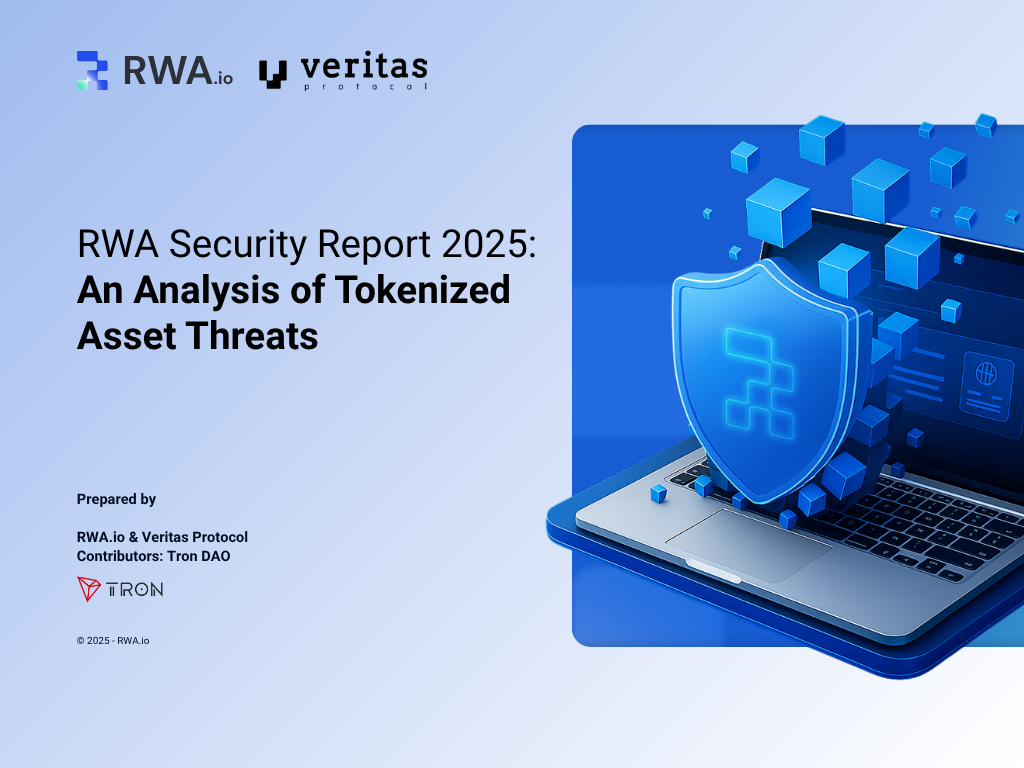[ newsletter ]
Stay ahead of Web3 threats—subscribe to our newsletter for the latest in blockchain security insights and updates.
Thank you! Your submission has been received!
Oops! Something went wrong. Please try again.
Learn about sandwich attack detection using MEV signals. Understand on-chain and ML approaches for identifying and mitigating these sophisticated threats.





So, you've probably heard about people making a lot of money on the blockchain, and sometimes, things get a little weird. One of those weird things is called a sandwich attack. It's a way some folks try to profit by messing with transactions. This article is all about how we can spot these attacks, understand how they work, and what we can do about them. We're going to look at the signals on the blockchain, how computers can help us out, and the challenges involved in sandwich attack detection.
Alright, let's talk about sandwich attacks. These are a pretty common type of exploit you'll see in the decentralized finance (DeFi) world, especially on decentralized exchanges (DEXs). They're a bit like a sneaky move in a game where someone tries to profit by manipulating the market price right before your trade goes through.
First off, we need to get a handle on what MEV is. Think of it as the profit that block producers (like miners or validators) can make by strategically including, excluding, or reordering transactions within a block they are creating. It's not just about the standard transaction fees; it's about the extra value they can extract by having control over the order of operations. MEV is essentially the profit from reordering transactions. This can come from various sources, including arbitrage opportunities, liquidations, and, of course, sandwich attacks.
So, how does a sandwich attack actually work? It's a three-step process involving a malicious actor, often called a "searcher" or "bot."
This whole process relies on the attacker being able to predict or see pending transactions in the mempool (the waiting area for transactions) and then submitting their own transactions with higher gas fees to ensure they get processed in the desired order.
It's important to know that sandwich attacks are just one flavor of MEV. Other common MEV strategies include:
Sandwich attacks are distinct because they directly target a user's trade, aiming to profit from the price impact created by the attacker's own transactions surrounding the victim's. While arbitrage and liquidations often involve finding market inefficiencies, sandwich attacks are more about creating and exploiting a temporary price distortion around a specific user's action.

Spotting a sandwich attack isn't always about catching a glimpse of the attacker's wallet. Often, the real clues are hidden in plain sight, right there on the blockchain. We're talking about transaction patterns, how much gas is being used, and specific events that happen during swaps. These on-chain signals can paint a pretty clear picture if you know what to look for.
Bots, including those performing sandwich attacks, tend to behave differently than regular users. They often execute transactions in rapid succession, sometimes with very specific timing. Think about it: a bot needs to place a buy order, then wait for the victim's transaction to push the price up, and then quickly place a sell order. This sequence creates a distinct footprint.
Gas is the fuel that powers transactions on blockchains like Ethereum. Attackers, especially those trying to get their transactions included quickly and in a specific order, often have to pay a premium. This means their gas usage can be a big giveaway.
Here's a quick look at how gas prices might differ:
Beyond just looking at raw transaction data, we can also examine specific events emitted by smart contracts, particularly those related to Decentralized Exchanges (DEXs). These events provide structured information about what actually happened during a swap.
Swap Events: Analyzing the parameters within Swap events can reveal unusual trade sizes or price impacts that don't align with normal market activity.Transfer Events: Monitoring Transfer events associated with a swap can help trace the movement of tokens before and after the swap, potentially identifying the attacker's involvement.Swap event data. A disproportionately large price impact for a given trade size is a strong indicator of a sandwich attack, as the attacker's trades are artificially inflating the price.The key is to look for a combination of these signals. A single high gas price might be normal during network congestion, but when coupled with rapid transaction sequencing and unusual price movements within swap events, it becomes a much stronger indicator of malicious activity like a sandwich attack.

So, how do we actually catch these sneaky sandwich attacks using computers? That's where machine learning (ML) comes in. It's like teaching a computer to spot patterns that humans might miss, especially when things are happening super fast on the blockchain.
This is probably the most straightforward way to start. You train a model by showing it a bunch of examples – some transactions that are definitely from sandwich bots, and some that are normal. The model learns what features are common in attack transactions. Think of it like showing a kid pictures of cats and dogs until they can tell them apart. We can use algorithms like Random Forest or XGBoost for this. They're pretty good at handling the kind of data we get from blockchain transactions.
Here's a simplified look at what we might feed into the model:
The goal is to get the model to accurately label new, unseen transactions as either 'attack' or 'normal'.
Once we have a model that's doing a decent job, we want to know why. Which pieces of information are the most helpful for the model to make its decision? This is where feature importance comes in. It tells us which signals are the strongest indicators of a sandwich attack. For example, we might find that a sudden, large spike in gas price right before a big swap is a really strong signal. Or maybe the specific sequence of contract calls is a dead giveaway. Understanding this helps us refine our detection methods and even understand attacker behavior better. It's like figuring out which clues the detective used to solve the case.
Now, it's not always easy. Sandwich attacks are just one type of MEV. There are others, like front-running and back-running, that can look pretty similar. Plus, attackers are always changing their tactics. Some attacks might involve multiple tokens, making them harder to spot with existing methods [23a9]. So, a model trained to catch one type of sandwich attack might miss a slightly different variation. It's a constant cat-and-mouse game. We need models that are not just good at detecting attacks, but also at distinguishing between the different kinds of shady activity happening on-chain. This is where more advanced techniques come into play, but for now, getting a solid ML model to flag suspicious transactions is a big step.
Building effective ML models for sandwich attack detection requires careful feature engineering and a good understanding of blockchain transaction patterns. It's not just about throwing data at an algorithm; it's about selecting the right signals that truly represent the behavior of these attacks. The complexity of smart contract interactions and the evolving nature of MEV strategies mean that these models need continuous updating and refinement to stay effective.
Okay, so we've talked about the basics and some machine learning stuff. But what about when attackers get really good at this? That's where the more advanced techniques come in. We're talking about systems that don't just look at one transaction, but the whole picture, all the time.
Think of this as having a security guard who never sleeps, never blinks, and has seen every trick in the book. Instead of just checking security cameras once a day, this guard is watching everything, constantly. This involves using AI, specifically systems built on architectures like Transformers, to process massive amounts of data. We're talking about analyzing contract interactions, checking if the code is doing what it's supposed to, and looking at how different parts of a system depend on each other. It's about spotting weird patterns as they happen, not after the fact. This kind of system can process huge amounts of code and interactions, way faster than any human could, and it's designed to find tricky vulnerabilities like reentrancy or logic flaws that might otherwise slip through the cracks. A key part of this is the ability to process a large context, meaning it can look at a whole project's code or a long chain of interactions without losing track.
This is where things get really interesting. Instead of one big AI, imagine a whole team of specialized AI agents, each with its own job. One agent might be great at spotting transaction anomalies, another at checking smart contract logic, and a third at understanding how different contracts talk to each other. They all work together to audit the entire DeFi ecosystem, not just one contract. This approach allows for a more holistic view, identifying dependencies and potential weaknesses across multiple protocols. It's like having a whole security firm working on your behalf, but it's all automated and running 24/7. These systems can analyze contract interaction patterns and validate business logic against intended behavior, providing a comprehensive security audit framework. A system like this can process up to 131,072 tokens per analysis, which is pretty wild when you think about the scale of some DeFi projects.
This is the nitty-gritty of advanced detection. It's all about watching how contracts talk to each other, right now. We're not just looking at individual transactions anymore; we're analyzing the sequence and nature of interactions between smart contracts. This means looking at things like:
By analyzing these interactions in real-time, we can catch suspicious activities that might indicate a sandwich attack or other MEV-related exploits as they're unfolding. For example, a sudden, unusually large number of internal transactions between a trading pair contract and a liquidity pool contract, especially if it follows a specific user's transaction, could be a strong signal. This kind of detailed analysis helps in building more accurate detection models and can even feed into automated response systems. It's about understanding the 'conversation' between contracts to spot malicious intent.
The challenge here is not just identifying suspicious patterns, but doing so fast enough to matter. Attackers are quick, and if your detection system is too slow, it's like trying to catch a speeding bullet with a net that's still being woven. Real-time analysis means processing data streams as they arrive, making decisions in milliseconds, and acting before the exploit is complete. This requires highly optimized algorithms and robust infrastructure.
This continuous, AI-driven approach is key to staying ahead of sophisticated attackers in the fast-paced world of decentralized finance. It's a big step up from basic transaction analysis, aiming for a more proactive and comprehensive security posture. For instance, a new Solana MEV bot is already incorporating advanced MEV protection, showing the direction the industry is heading.
So, we've talked about what sandwich attacks are and how to spot them. Now, let's get into how we can actually do something about them. It's not just about finding the bad guys; it's about building defenses that make it harder for them to pull off these tricks in the first place.
Think of proactive controls as building a stronger fence around your digital assets. It's about putting measures in place before an attack happens. This can involve a few different things:
Even with the best defenses, sometimes things go wrong. That's where incident response comes in. Having a plan ready to go can make a huge difference when an attack is detected.
The goal here is to move from a reactive stance, where you're cleaning up after a mess, to a proactive and automated system that can either prevent attacks or shut them down almost instantly. It's about building resilience into the system so that it can handle unexpected events with minimal disruption.
Trust scores can be a useful tool in assessing the overall risk associated with certain transactions or protocols. While not a direct mitigation for sandwich attacks themselves, they contribute to a safer ecosystem.
Detecting sandwich attacks isn't as straightforward as it might seem. Attackers are always cooking up new ways to hide their tracks, making it a constant game of cat and mouse. Plus, the sheer complexity of smart contracts means that what looks like an attack might just be some really intricate, but legitimate, code doing its thing. It's a tricky balance to catch the bad guys without flagging innocent transactions.
Attackers are getting smarter, constantly changing their methods to slip past detection systems. They're not just sticking to one playbook anymore. This means that any detection strategy needs to be super adaptable.
Here are a few ways attackers try to stay ahead:
Smart contracts are the backbone of decentralized applications, but they can be incredibly complex. Sometimes, the code itself has intricate logic that can mimic the patterns of an attack, leading to false positives. It's like trying to spot a fake painting when the artist is a master forger – the details are incredibly similar.
This is the big one. You want to catch all the sandwich attacks (minimize false negatives), but you also don't want to flag legitimate transactions as attacks (minimize false positives). Getting this balance right is tough.
Finding that sweet spot requires sophisticated analysis and a deep understanding of both attacker behavior and the nuances of smart contract interactions. It's a constant effort to refine detection models to be both accurate and efficient.
So, we've looked at how sandwich attacks happen and what kind of signals we can spot to catch them. It's clear that keeping an eye on these MEV (Maximal Extractable Value) activities is becoming super important for anyone involved in decentralized finance. While it's a bit of a cat-and-mouse game, using smart tools and keeping up with the latest research helps us build better defenses. The goal is to make these kinds of attacks harder to pull off and protect users' assets. It's all about staying one step ahead in this fast-moving space.
Imagine you want to buy some digital money, like a sandwich. A sandwich attack is like someone knowing you're about to buy it. They quickly place an order to buy it right before you, making the price go up. Then, they let you buy it at that higher price. Finally, they immediately sell the money they bought earlier, making a profit from the price jump they caused. It's like they 'sandwiched' your buy order between their own two orders.
MEV stands for Maximal Extractable Value. It's the extra profit that people who help create blocks on a blockchain (like miners or validators) can make by deciding the order of transactions. Sandwich attacks are one way to get this extra profit (MEV). The attacker uses their power to put their own buy and sell orders around your order to make money.
Spotting these attacks involves looking for specific clues on the blockchain. We can watch for unusual patterns in how transactions are sent, like seeing a buy order immediately followed by a sell order for the same digital money. We also look at how much 'gas' (fees for transactions) is used, as attackers might use it in a specific way. Sometimes, we can even see special 'events' that happen when digital money is swapped, which can signal an attack.
Yes, absolutely! We can use computer programs and smart AI to watch the blockchain all the time. These programs can learn what normal activity looks like and then flag anything suspicious, like the sandwich attacks. They can analyze lots of data very quickly to find these tricky moves that humans might miss.
Protecting against them is tricky, but there are ways. Some systems try to make transactions private so attackers can't see them coming. Others use 'trust scores' to judge how safe a transaction or a digital wallet is. Having quick responses ready when an attack is detected is also important, like having a plan to undo the damage if possible.
Attackers are always coming up with new tricks, making it a constant challenge. The code that runs on blockchains (smart contracts) can be very complicated, and sometimes it's hard to tell if something is a real attack or just normal, complex activity. It's also tough to be perfectly accurate; we don't want to flag too many normal transactions as attacks (false positives) or miss actual attacks (false negatives).


